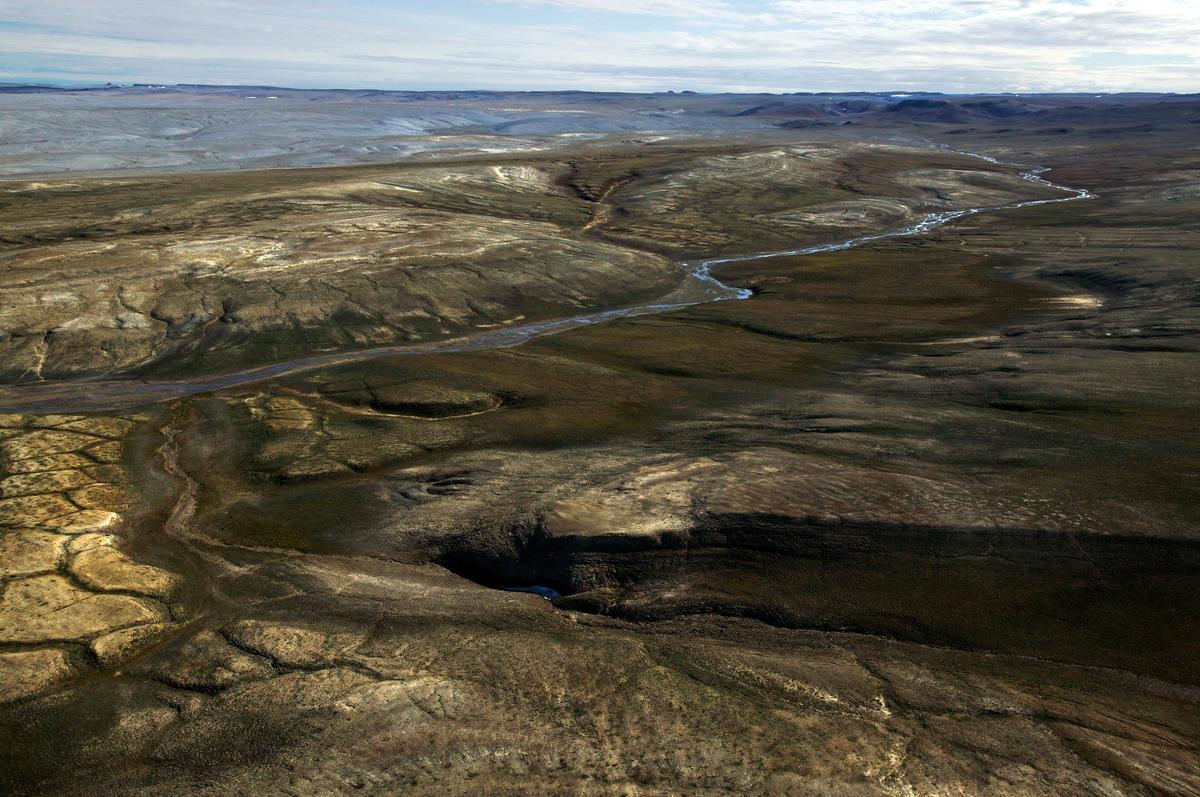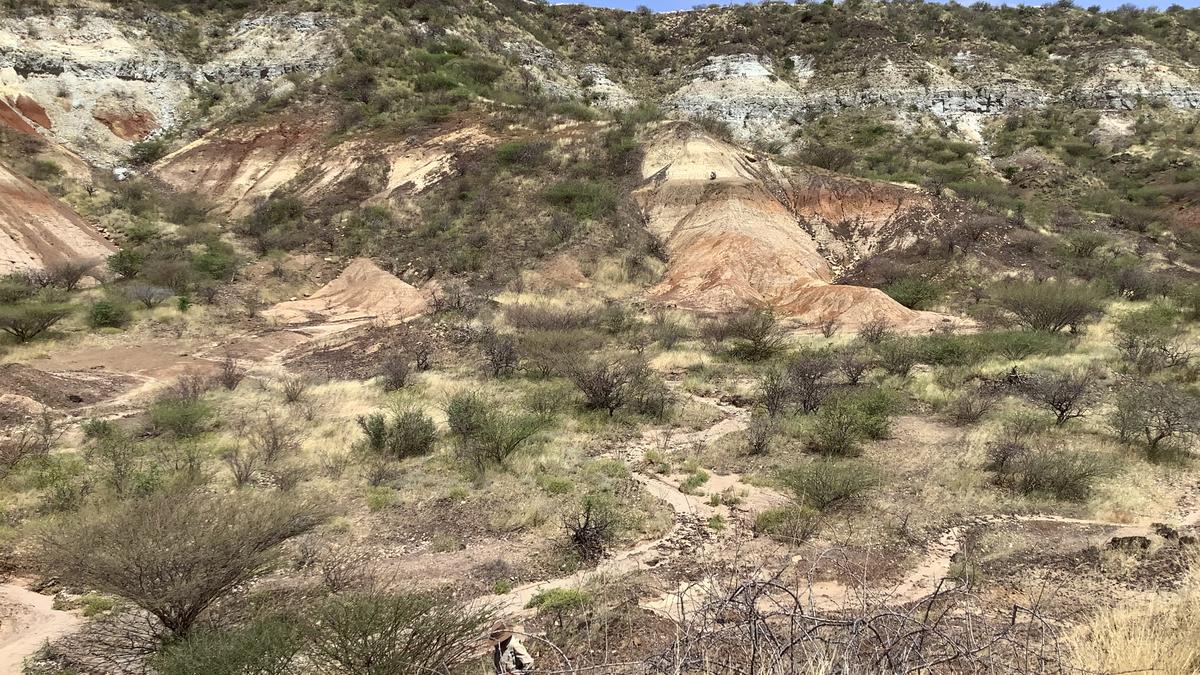If obtaining sequences from ancient proteins found in fossils was previously limited to samples no older than four million years, two studies published in the journal Nature on Wednesday (July 9, 2025) have pushed back this timescale to more than 20 million years. The enamel proteins from extinct mammals are a staggering ten-fold older compared with the oldest known ancient DNA that has been obtained so far. The studies have used proteins or peptides trapped within dense enamel of the mammal teeth to study palaeoproteomics and to obtain phylogenetic information of extinct mammals.
One study is of enamel proteins from extinct mammal fossils from the Turkana Basin in Kenya, and the other study is of enamel proteins from extinct mammals in the Haughton impact crater site located on Devon Island, Nunavut in far Northern Canada.
“The two papers have redefined the boundaries of biomolecular preservation in the fossil record,” says Dr. Niraj Rai, Head of the Ancient DNA Lab at the Birbal Sahni Institute of Palaeosciences (BSIP) in Lucknow, who is not part of the two studies. “These findings confirm that enamel — a highly mineralised and durable tissue that serves as an extraordinary molecular archive — is capable of preserving endogenous peptides far beyond the temporal limits of ancient DNA, which typically degrades within a million years.”
If recovering evolutionary-informative protein sequences from samples 18 to over 20 million years old is by itself remarkable, recovering well-preserved protein samples of extinct mammals 18 million years old from the Turkana Basin in Kenya, which is a hot tropical site, is even more astounding. Unlike in cold climatic conditions, the possibility of finding well-preserved DNA and proteins dating back millions of years in one of the hottest regions in the world is slim. As a rule, molecular breakdown happens over time, which is exacerbated in a hot climate.
A view of the Turkwel River in Turkana, northern Kenya, where the fossils from which ancient peptides were recovered are found.
| Photo Credit:
Daniel Green
The second study is on protein samples encased deep within the teeth enamel found in fossil samples collected from the Haughton impact crater site located on Devon Island, Nunavut in far Northern Canada. The researchers extracted and sequenced ancient enamel proteins from a fossilised rhino tooth that are 21-24 million years old. They recovered partial sequences of seven different enamel proteins and over 1,000 peptides.
A recent study of an ancient Egyptian who lived 4,500-4,800 years ago as well the two current studies on extinct mammals have relied on teeth samples to obtain genetic and phylogenetic information, respectively; teeth samples have turned out to be invaluable in preserving almost intact DNA and proteins. DNA found at the root tip of teeth of the ancient Egyptian allowed researchers to sequence the whole genome of the ancient man. Now, two separate teams have successfully used proteins encased within dense enamel of teeth of different mammals to interpret the biology and evolution of mammals that lived 18-24 million years ago in completely different climatic settings — frigid cold and hot tropics.
Proteins not inferior to DNA
Explaining that not just DNA but proteins too can reveal vital information about ancient animals, Dr. Timothy P. Cleland in an email to The Hindu says: “Proteins are translated from DNA so it can provide similar information. We can learn a wide variety of information from studying proteins from ancient animals.” Dr. Cleland, a Physical Scientist at the Smithsonian Museum Conservation Institute, Suitland, Maryland, and one of the corresponding authors of the East African Rift paper, cites the example of an enamel protein called amelogenin which has X-linked and Y-linked forms that can be used to estimate biological sex of the mammal being studied. The enamel proteins have more evolutionary information than collagen (for example) and can be used to evaluate the evolutionary relationships of fossil species beyond morphology alone, he says.
Dr. Ryan Sinclair in an email says that he would not say either palaeoproteomics or palaeogenomic data is more reliable than the other, when it comes to studying living organisms. Dr. Paterson is from Globe Institute, University of Copenhagen, Copenhagen, Denmark, and the first and a corresponding author of the paper on the discovery of teeth enamel of Rhinocerotinae in the Haughton impact crater site, Nunavut in far Northern Canada. “Genomic data can have a higher resolution, and be more useful for finer aspects, particularly of relatedness amongst closely-related lineages. Proteomic data can also be very useful for resolving very deep splits in the tree of life, as they are thought to be less prone to convergence and saturation,” he says.
Dr. Paterson further adds: “With these ancient proteins, while they lack the resolution of DNA, they still represent robust genetic sequence data, carrying mutations that can allow for sequence-based timetrees. I think that is the major goal of this type of palaeoproteomic study – filling in the tree of life across vast geological timescales using genetic sequence data.”
Both teams extracted key structural enamel proteins, enamelin, ameloblastin, and amelogenin using advanced mass spectrometry and rigorous criteria to rule out contamination. Remarkably, diagenetic alterations once considered damaging, such as advanced glycation end-products and carbamylation in the Kenyan samples, or widespread arginine oxidation and peptide bond hydrolysis in the Arctic specimen, are now leveraged as hallmarks of authenticity, says Dr. Rai.
“The study of enamel proteins from fossils has been an exciting area of research for the last several years, and has benefited from new extraction methods, improvements in mass spectrometry methods, and data analysis tools. We took advantage of all of these developments to find preserved proteins from mammal enamel from the Turkana Basin of Kenya,” says Dr. Cleland.
The Turkana Basin has produced the richest record of mammal evolution in eastern Africa in the current geological era — the Cenozoic Era — spanning the last 66 million years. The researchers had examined protein fragments ranging from 1.5-million-year-old elephant fossils to 29-million-year-old fossils from Arsinoitheriidae, a family of extinct, rhinoceros-like ungulates. The Turkana Basin has been found to document the evolutionary origins and/or diversifications of key taxonomic groups of African mammals, such as proboscideans, rhinocerotids, hippopotamids and hominoids (great apes).

View of the Haughton Formation near Rabbit Run creek on Devon Island, Nunavut. The dry, cold “polar desert” conditions helped preserve the ancient rhinoceros fossil found here, including traces of original proteins.
| Photo Credit:
Martin Lipman
Shielding the embedded proteins
Explaining how the proteins had escaped complete destruction during the last 18 million years despite the hot climate and diagenesis — the physical and chemical changes that occur during the conversion of sediment to sedimentary rock — at the Turkana Basin, Dr. Cleland says: “Because the proteins are essentially self-fossilised within the enamel mineral, they are protected from other environmental impacts that could lead to their loss.” Going further to explain how the enamel proteins are protected even for millions of years, he says: “Enamel is the hardest substance that animals produce and shields the embedded proteins from access to water or microbial impact, so it begins as a good place to find the preserved proteins.” The researchers had sampled the internal part of the enamel that is fairly thick in these species, so it is unlikely that protein from elsewhere would be deposited on the enamel.
Despite building the study to have a range of ages from 1.5 million years to 29 million years to explore the preservation of enamel proteins across a long-time range, the researchers of the Turkana Basin in the East African Rift System were “surprised and excited to find proteins that retained evolutionary information all the way to 18 million years”.
Though the hot climate is not conducive for protein preservation for millions of years, the Turkana Basin also has fluviodeltaic sediments, which might have led to swift burial of ancient animals, thereby resulting in relatively well-preserved fossil samples. The findings from the Turkana Basin also suggest that this could have been the case. “Relatively more proteins are found in some sites that we study, compared to others. For instance, we find an especially high number of peptides from fossils at a very old site, Buluk. Sedimentary data suggest that Buluk fossils were buried rapidly, and this may be why protein preservation is better there,” Daniel R. Green from the Department of Human Evolutionary Biology, Harvard University, and the first and one of the corresponding authors of the East African Rift paper tells The Hindu in an email.
Swift burial may have played a role in preserving the proteins even in the case of the Haughton impact crater site located on Devon Island, Nunavut, where it was a lake. “Swift burial can help with preservation of bones and teeth under the right conditions. Specifically, we expect exceptional preservation when there is both rapid burial and low oxygen or anoxic conditions. There may have been some low oxygen conditions in the Haughton Lake, as mummified wood has been discovered. So, it’s possible that this contributed to the exceptional preservation. However, it is most likely related to the cool temperatures, specifically preservation in permafrost. Interestingly, a lot of bones from the Haughton Crater end up broken due to the repeated freeze and thaw of the permafrost. Some are also brought to the surface by this freeze and thaw action, making them easier to find,” Dr. Danielle Fraser from Palaeobiology, Canadian Museum of Nature, Ottawa, Ontario, Canada and one of the corresponding authors of the paper says in an email to The Hindu.
The team has collected a large amount of data from all of these sites across northern Kenya, which includes information about ancient climatic conditions as estimated through Earth System Climate Models. “We have reconstructed vegetation and rainfall through soil chemistry analyses. And we can make inferences about ancient diets, behaviours, and evolutionary processes through the fossils themselves, and their stable isotope compositions,” says Dr. Green.
According to Dr. Frazer, finding intact teeth, which are identifiable, is not surprising, given that there are teeth from mammals dating back many more millions of years into the Mesozoic. “What is exceptional, is that the proteins we recovered were complete and abundant enough to infer evolutionary relationships; these are, by about 10 million years, the oldest from which evolutionary information has been gleaned,” he says. “Specifically, we were able to test a hypothesis about the evolution of rhinocerotids (rhinoceroses and their extinct relatives), a group whose past diversity was much greater than today. What recovering such evolutionarily informative proteins from this fossil tells us is that we will be able to test many more hypotheses using many more fossils from the Arctic and, perhaps, challenge some other long-held evolutionary hypotheses along the way.”
The Haughton Crater has been studied for decades to understand the depositional environment, the plant community, the date of the formation of the crater (based on several types of exact dating), the mammal fauna etc. “What we know is that the environment was fundamentally different from the modern Arctic, being much more temperate, and that the mammal fauna was unique, being a combination of species with North American and Eurasian affinities,” says Dr. Frazer.
He is very hopeful that we will see evolutionarily informative proteins extracted from older [more than 24 million years] materials and expects them to be found in Arctic or Antarctic conditions, where they have been preserved in a “freezer” for many millions of years.
The authors of the Haughton impact crater site located on Devon Island, Nunavut in far Northern Canada used the protein sequences to shed light on the divergence between the two main subfamilies of rhinos, Elasmotheriinae and Rhinocerotinae. Based on protein sequences, they revised the rhinocerotid phylogeny, showing that Epiaceratherium diverged prior to the Elasmotheriinae-Rhinocerotinae split, contradicting fossil-based models that suggested a deeper basal divide.
